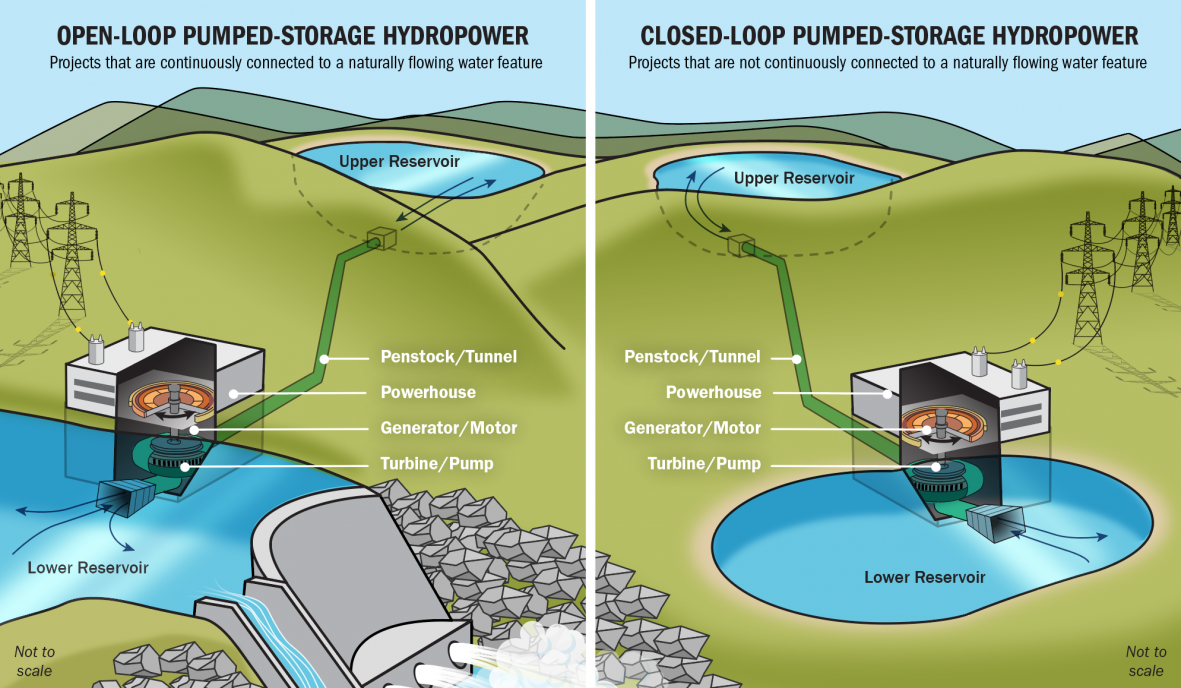Some proposals are so fantastical they remind one of the Soviets and their mega-engineering projects:
"Okay comrades, we reverse the flow of the river, da?"On the other hand something like pumped storage hydropower does make sense in localities with enough verticality:

And truth be told I didn't make fun of the reversal of the Chicago River.
Although there is now talk of re-reversing it which may be deserving of some minor mockery and snark.
Anyhoo, Void Shaft Electricity.
From BLDG BLOG, Feb. 9:
A Scottish firm called Gravitricity wants to turn abandoned mine shafts into gravity-driven, underground electrical batteries. Power could be generated and stored, the Guardian reported back in late 2019, “by hoisting and dropping 12,000-ton weights—half the weight of the Statue of Liberty—down disused mine shafts.”
By timing these drops with regional energy demand, Gravitricity’s repurposed mines could act as “breakthrough underground energy-storage systems,” a company spokesperson explains in a video hosted on their site.
“Gravitricity said its system effectively stores energy by using electric winches to hoist the weights to the top of the shaft when there is plenty of renewable energy available, then dropping the weights hundreds of meters down vertical shafts to generate electricity when needed,” the Guardian continues.
In Subterranea: The Magazine for Subterranea Britannica, where I initially read about this plan, some of the proposal’s inherent design limitations are made clear. “What would be required for the Gravitricity scheme,” SubBrit suggests, “would be very deep, wide, and perhaps brick-lined shafts clear of ladderways, air ducts, cables and the like. On what sort of surface the weights might land, time and time again, is another consideration.”......MORE
